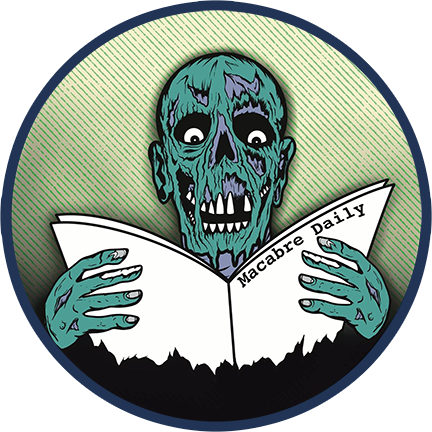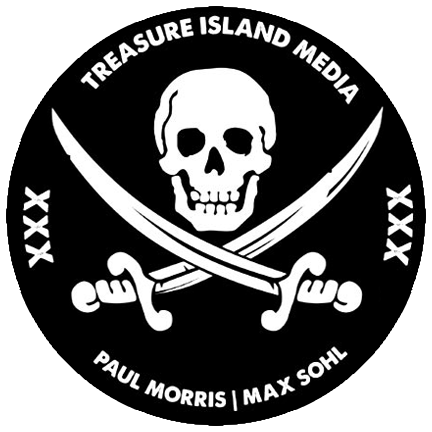
LGBTQ+ HORROR
LGBTQ+ themes in horror fiction refers to sexuality in horror fiction that can often focus on LGBTQ+ characters and themes within various forms of media. It may deal with characters who are coded as or who are openly LGBTQ+, or it may deal with themes or plots that are specific to gender and sexual minorities. Depending on when it was made, it may contain open statements of gender variance, sexuality, same-sex sexual imagery, same-sex love or affection or simply a sensibility that has special meaning to LGBTQ+ people.
WHY QUEER HORROR
Genre films (Horror, Science Fiction, Fantasy, Etc.) are extremely significant and important to the LGBTQ+ community. Growing up gay, we are often made to feel like an abomination. Therefore, when we watch horror movies, we can identify with BOTH the monster and the final girl fighting for her life. Because, by our very nature, we ARE both.
Let’s take Mary Shelly’s Frankenstein for example. Dr. Frankenstein creates life. A proud new parent. But the “child”, Frankenstein’s Monster, is different than the other “children”. And because he was “born” different, he is misunderstood, he is feared, he is chased by a torch-wielding mob, he is rejected by Dr. Frankenstein – his FATHER – and in the end, he is destroyed. How is this scenario any different than the story of millions of gay children coming out to their families (Minus the torch-wielding mob)?
Queer audiences can find validation and catharsis in horror films. And it’s because of the genre’s ability to reflect the fears, violence AND triumphs of the LGBTQ+ reality.
Interview with Abigail Waldron
Author of “Queer Screams: A History of LGBTQ+ Survival Through the Lens of American Horror Cinema”
QUEER SCREAMS: What was the impetus for writing the book? I know that the book started as a part of your Master’s Thesis, but what made you choose the topic of queer representations in horror films in the first place?
ABIGAIL WALDRON: I began thinking about a book a few months prior to grad school. At first, I researched Black representation in American horror films. I soon realized that I did not have the adequate insight to dive into this topic as I am a white woman. I turned my focus to queer representation and found I had genuine insight into the topic. I adore horror, and I knew there was a lack of current queer discourse concerning the genre.

QS: What was the first horror film that made an impact on you (not necessarily the first horror film you saw, but the first one to make a lasting impression)? And why do you think it affected you?
AW: One of the first films I saw as a kid that equally scared and thrilled me was Disney’s Return to Oz (1985). Though not a horror movie, anyone who saw it as a kid can attest: there are some extremely disturbing aspects to this often-overlooked film. I still find the themes creepy. The movie holds a special place in my heart as helping to kickstart my love of all things spooky and fantastic.
QS: Why do you feel that this book is important NOW (in this day and age) in 2022? How different would the book’s impact have been had it come out 10 years ago (or 20 years ago)?
AW: When researching for my MA thesis, I found few books written on queer representation in horror movies specifically. Namely, the central text was Harry M. Benshoff’s Monsters in the Closet (1997). Queer discourse has evolved since 1997, with emphasis on gender fluidity, expression, and transgender and intersex experience. I wanted to make sure my book discussed the trans experience in horror especially, since there is a dark history of using trans bodies as horror in the horror genre for decades. I feel my book would have been controversial had it been released in 2002. Maybe not as much in 2012, but even then, Marriage Equality was a year or two away.
QS: Many queer people are drawn to horror (myself included) because we so often can identify with “The Other” (usually the monster). Can you expound on this concept of “Otherness”?
AW: Otherness is embedded in horror. Horror depends on misfits, strange characters, the uncanny. Otherness is also very present in American history. We love a scapegoat, and we love putting people in boxes. Often, if something negative happens, social Others are blamed. The concept of Otherness has been ised to dehumanize characters on screen, often the queer and BIPOC characters. There has been a growing movement though of reclamation, of taking once harmful, Othered representations and claiming them for ourselves. The best examples include the reclamation of iconic monsters. In the words of Josephine Joseph, the intersex performer in Freaks (1932), they are “one of us!”
QS: Can you tell me a little more about “Queer Subtext” and “Gay Sensibility” as it pertains to horror (and the Hays Code)? And why it was/is important for queer audiences?
AW: So queer subtext lies in the subtleties, and often, it is perceptible only by queers and some knowledgeable allies. Queer subtext can be negative or positive. Unfortunately, horror, a genre that leans more toward negatives in life such as life threatening situations or violent people, has often used queer subtext to make queers more frightening, whether by making a villain have queer attributes or a character exhibit harmful queer stereotypes. However, some subtext was positive as with the case of queer writers and directors in the horror genre infusing their queer sensibilities into their films. This infusion allows for identification by queer audiences.
QS: What/who was the first openly gay character in a horror movie (not the actor playing the character, but the character itself)? And what was the impact (if any) of that character’s out gayness?
AW: This is tough to answer. There are millions of horror movies out there that I naturally have not gotten the chance to explore. Prior to the Hays Code, there were plenty of coded-queer characters, but not exactly openly queer (since most queers were relegated to play side characters and their lives not fully extrapolated on screen). The first one that comes to mind, however, is Lady Divine in John Waters’ Multiple Maniacs (1970). I’m sure there was open representation prior. Divine has had a HUGE impact on queer culture. Her underground stardom paved the way for countless others.
QS: When a writer writes a book (non-fiction, or even complete fiction) there is usually a lot of research conducted before putting pen to paper (or fingers to computer keyboard). What research did you conduct and what was your favorite part of the research process?
AW: I found as many books on queer media as possible. I also reached out to my instagram followers for their insight which was so enlightening. My favorite part of the process though was getting to comb through the online Fangoria archive. Fangoria, especially early Fangoria mags with all of their vivid, bloody, color photos, were so fun to flip through and find original film reviews, interviews, and early queer horror think pieces and coverage.
QS: Now that we are 20+ years into the 21st Century, how has queer representation in horror changed/grown? Has it changed/grown enough? And what aspect(s) of queer horror are still lacking representation?
AW: I keep a spreadsheet of queer representation in American horror films. Between 2000 and 2022, I identified 139 films with either queer representation, homophobia, queer directors/writers, etc. of these 139, 70 have explicit queer characters. This is an incredible amount compared to the abysmal amount representation prior to the 21st century. Prior, much of the reason why films ended up on my list was due to slurs or outright homo/transphobia. This is no longer the case. Horror is truly evolving from the mindset of evil queers and is becoming a genre in which queers exist, and some even get to be the protagonists. Work still needs to be done, however. There is still a lacking of queer BIPOC representation despite more recent films’ efforts to include queer BIPOC stories.
QS: Do you have any final thoughts, words of inspiration, humorous anecdotes that you would like to share? 🙂
AW: Keep it queer, keep it spooky!

ABOUT THE AUTHOR
Abigail is an American historian who specializes in LGBTQ+ history and media representation. She earned her MA in American Studies and a Certificate in Museums & Communities from Trinity College. She is a contributing writer for Horror Press, and her other work can be found on Rue Morgue, Gayly Dreadful, and Hear Us Scream.
LINKS TO LGBTQ+ HORROR ARTICLES & BOOKS
CLICK ON THE TITLE TO BE TAKEN TO THE ARTICLE OR VENDOR
- A Historical Analysis of Queer Depictions in Horror Films
- It Came From The Closet: How Horror Is Queer
- The History Of Horror Is Gay
- Why Queer Horror? – Stage Fright Festival Blog
- Queer Screams: A History of LGBTQ+ Survival Through the Lens of American Horror Cinema [BUY BOOK]
- I Was A Teenage Monster Hunter! [BUY BOOK] 100% proceeds go to the Trevor Project
- Monsters in the closet: Homosexuality and the Horror Film [BUY BOOK]






